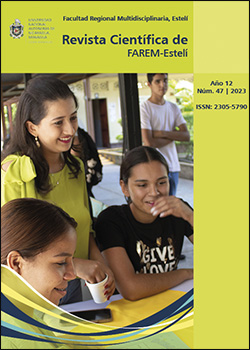Application of Latin square experimental design to analyze seed varieties of rice (Oryza Sativa) in The Sébaco Valley, Nicaragua
DOI:
https://doi.org/10.5377/farem.v12i47.16861Keywords:
Latin square experimental design, performance variables, riceAbstract
This article deals with aspects on the application of the Latin square experimental design as a statistical tool with the objective of analyzing the significant differences between seed varieties of rice (Oryza Sativa) such as ANAR-97, INTA dorado and the new variety Línea 424 for intercycle harvesting periods, that is, short and fast cycles, without neglecting the obtaining of results in terms of yield variables. Now, the analysis of the seed varieties of the rice crop through the Latin square experimental design for the improvement of the productive efficiency, focused on a complete analysis of the agronomic changes in the preparation of the soil, sowing, application of chemical products and harvesting of the seed in rice grain in granules. This through an improvement proposal to be validated by reliable multivariate statistical tests such as Multivariate Analysis of Variance (MANOVA) and experimental designs such as Latin Square Design (LSD) as a univariate Analysis of Variance (ANOVA). The LQD was useful to detect and check the acceptable significant differences in the analysis of the chosen seed varieties vs. the improved seed, providing very noticeable improvements in the yield variables, especially a 15% increase in productive efficiency of rice in grain of 200 qq/mz in summer. Now, within the methodology is to verify differences between variance, containing their respective indicators of irrigation treatments, doses of chemicals and control of harvest parameters, in addition to the theoretical, scientific and experimental method for validation and analysis, as well as the use of the statistical program SPSS and Microsoft Excel, within the satisfactory results in the multiple range tests and its yield variables, resulted in a coefficient of variation of 4 - 6% of acceptability in the agronomic processes of the crop using multivariate statistics selected the seed variety Line 424 as one of the most ideal to obtain fast harvests in lands that have problems with red rice.
Downloads
References
Álvarez Amador, C. (2018). Manual de diseños experimentales. Nueva Guinea: Universidad de las Regiones Autónomas de la Costa Caribe, URACCAN - sede Nueva Guinea.
Centro Internacional de Agricultura Tropical(CIAT). (2005). Morfología de la planta de Arroz: Guía de estudio. Cali, Palmira, Colombia.
Condo Plaza, L. A., & Pazmiño Guadalupe, J. M. (2015). Diseño experimental en el desarrollo del conocimiento científico de las ciencias agropecuarias (Vol. 2). Riobamba, Ecuador: Instituto de investigaciones, Aval ESPOCH.
Díaz Monroy, L. (2007). Estadística multivariada:inferencia y métodos (2a ed.). Colombia: Facultad de Ciencias, departamento de Estadística.
Instituto Nicaragüense de Tecnología Agropecuaria (INTA). (2012). Guía tecnológica Cultivo de Arroz. Managua. Nicaragua. Recuperado el 16 de Octubre de 2021
Instituto Nicaraguense de Tecnología Agropecuaria(INTA). (2019). INTA DORADO en centro experimental TAINIC Sébaco. Matagalpa, Nicaragua. Recuperado el 14 de Octubre de 2021
Mendoza Rivera, H. (2016). Diseño Experimental. UNAL, Cursos de ciencias. Obtenido de http://red.unal.edu.co/cursos/ciencias/2000352/html/un1/cont_118-18.html
Pedroza, H. (1993). Fundamentación de experimentación agrícola. Managua, Nicaragua: Editora de Arte.
Vélez Barrera, S. (2020). Análisis costo beneficio de la siembra de arroz por trasplante vs. siembra directa . Recuperado el 14 de Octubre de 2021
Published
Issue
Section
License
Copyright (c) 2023 Revista Científica de FAREM-Esteli

This work is licensed under a Creative Commons Attribution-NonCommercial-ShareAlike 4.0 International License.



